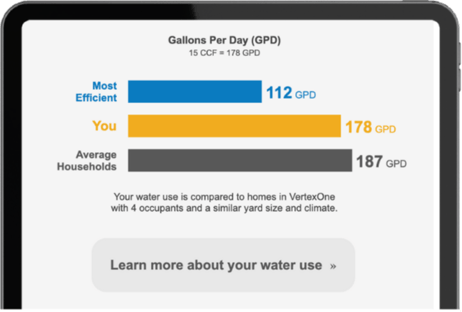A Water Utility Built for a Millennial
VertexOne
9 min read
The millennial generation homeownership rate has increased faster than that of other generations, with 47.9% of millennials now owning homes, and that number is still rising. 30% of millennials pushed up their intent to own a home due to the pandemic, making them a significant fraction of a utilities’ customer base.
The millennial generation is defined as those born between the years of 1982 and 1998. The impact this generation has had in transforming the transportation, shopping, and television industries is already clear: Just look to the widespread use of ride-sharing services like Uber and Lyft, the massive success of Amazon or the demise of video rental stores. Understanding how millennials think and what they expect from customer service is key to a successful future for utilities, particularly as they face critical infrastructure investments which often necessitate publicly approved rate increases.
Growing up in the age of internet
Millennials came of age during the internet explosion, strongly shaping their connection to instantly accessible information and their expectations on how people communicate and interact with each other. The concept of the internet was realized in 1969, and in 1972 electronic mail (e-mail) was introduced. The World Wide Web then went live to the world in August of 1991, when the oldest millennials were just 9 years old. Millennials have not known a world without access to computers, the internet and digital communication channels.
Millennials have always been leaders in the adoption and use of technology. In fact, Millennials are 2.5 times more likely to be early adopters of technology than other generations. More than nine-in-ten millennials (92%) own smartphones and 85% of millennials say they use social media. This attachment to technology and the internet has a strong influence on how millennials expect their utilities to communicate with them. 41% of millennials say they prefer electronic communications rather than face–to–face or telephony.
The traditional channels through which utilities have used to communicate with their customers are costly undertakings and are increasingly futile; sending mail, hanging messages on doors, and fielding numerous customer support calls amount to high operational costs and appear archaic with customers used to having a wealth of information at their fingertips.

Utilities must harness multi-channel customer engagement platforms to proactively identify customer needs, provide digital means for customers to send and receive critical information, and to save money.
Millennials want to do it themselves
Adapting to the needs of this new generation of customers requires utilities to thoughtfully consider the role of human employees in customer interactions. Millennial customers have demonstrated a preference for minimizing direct human involvement when feasible, leveraging technology to streamline processes and reduce reliance on traditional customer service channels.
69% of millennials say they feel good about themselves and a company when they are able to solve a problem without having to contact customer service centers. Plus. technologically driven automated leak resolution workflows, personalized to a household’s water use, is one such way utilities can empower customers with self-service tools to address potential problems. Glenview, IL found that by implementing VXsmart’s automated leak alerting and resolution solution they were able to drive their customers to self-resolve and save approximately 10 hours a week of staff time to focus on higher value projects.
Despite a recognized need to cut down on unproductive customer calls and improve the overall customer service experience, VXsmart offers utilities to utilize self-service tools like VXsmart’s leak alerting and resolution system to resolve customer issues online.
Many utilities are behind in adopting technologies that can reduce inbound calls in the first place. This is where to begin. Modern customer self-service platforms use artificial intelligence to proactively identify customer needs and offer digital tools to help customers prioritize and resolve the most common issues (high bills) without relying on a call center interaction. VXsmart’s Bill Explainer system uses advanced machine learning to identify likely causes of bill amounts and walks customers through a simple step-process to answer questions and help manage water spend, reducing customer support costs and boosting customer satisfaction.
The green generation
According to World Economic Forum’s 2017 Global Shaper Survey nearly 50% of surveyed millennials ranked climate change and the destruction of nature the most serious global issue; Accenture found that almost 80% of millennials would be more satisfied if their utility offered a tool to track usage and suggest customized products and services.
Millennial customers clearly value natural resources, reducing the need to educate customers on the value of water. J.D. Power’s 2015 Consumer Engagement study has already shown that millennials are more engaged with programs provided by their utility that allow them to take control over their usage and be hands-on with their data. Utilities providing ways for customers to track their water usage online will benefit from measurable satisfaction improvements.

Insight into how a customer’s usage compares to similar households and personalized recommendations on how to reduce usage has proven effective in improving water-use efficiency by up to 5% and increasing customer satisfaction by 25%.
Utilities have an opportunity to work with their growing millennial customer base to adopt products and services that will bring communication online, reduce costs, and help to better manage precious water resources. And while some people may believe there is plenty of time to prepare for these millennial customers due to their infatuation with avocado toast, utilities are well served by putting systems in place now to meet this generation’s expectations.